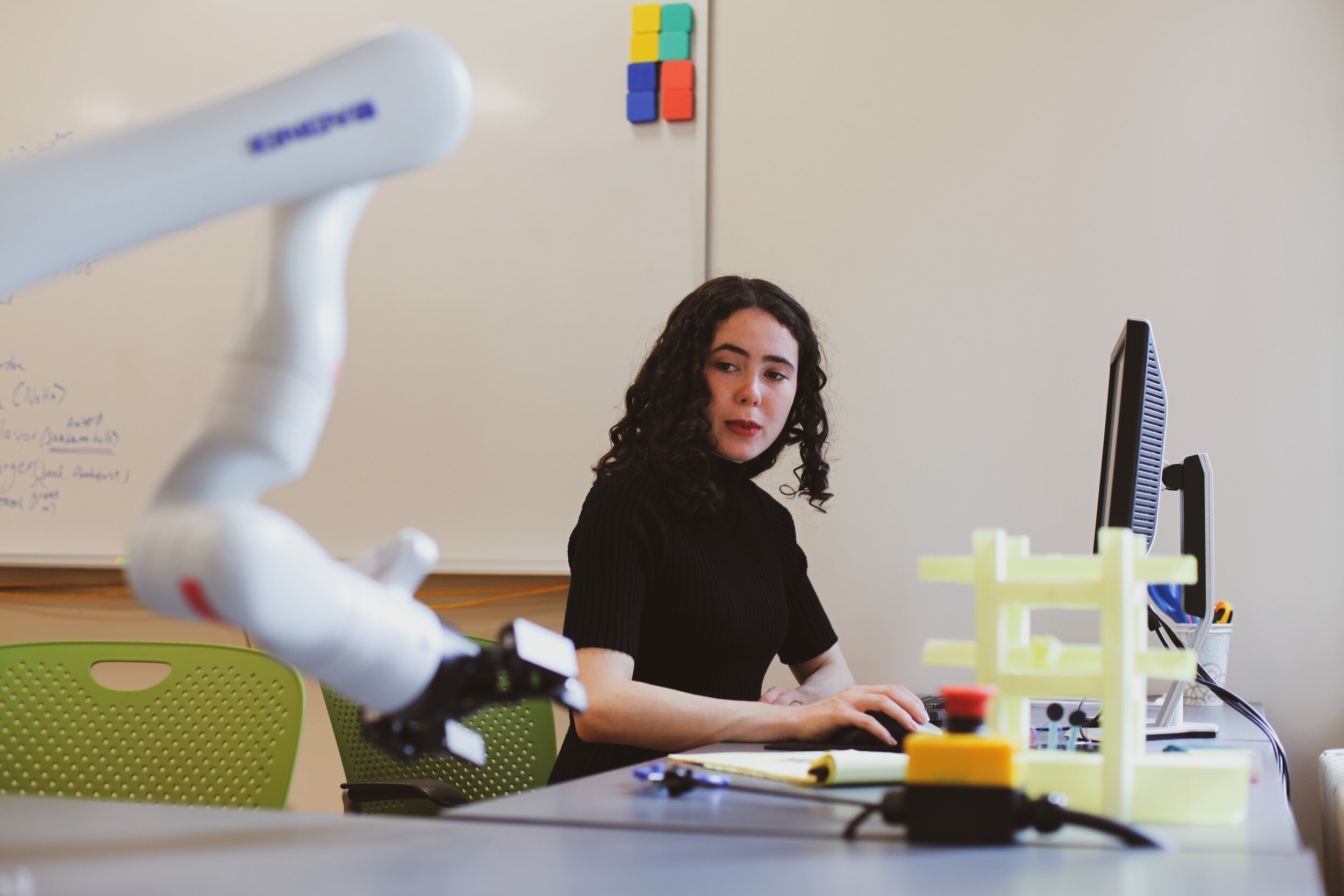Projects

Medical Robotics Research
At the MHC IMeRo Lab, she works on NSF-funded research to develop algorithms that can estimate force data from visual data. So far, she has generated visual and force data sets through the manipulation of soft objects with a robotic arm which will be used to train the algorithms. She was responsible for setting up the Kinova Gen3 arm, operating it and designing and coding experiment scripts. She also wrote code to record the visual and force data to ROS bag files.
The experiments were broken into three main sets by the materials they worked with. The first used exercise balls, the second a buddha board and brush, and the third, shown here, used putty. Above is a recording of the robot folding a piece of putty which she programmed to mimic the folding motions needed to knead bread.
She will be continuing research this fall. Among other projects, she will design and execute experiments using a laparoscopic surgery simulator and a surgical gripper to create a data set that mimics surgical video data.
Guess Who
As part of her Developing Innovative Software course, she worked with two classmates to create a desktop based Guess Who game over the course of 6 weeks.
Her focus was creating the networking side of the game. Using a game server on campus, she modified and added to its code to allow users to create game rooms with a game specific code. For example, the host of the game could set the game code as “hello” and when the other player wanted to join the game, they were able to join the right room by entering the code "hello” from their computer.
She also worked on the underlying structure of the game to synchronize network messages, graphics and game logic so they each worked together smoothly.
Demonstration of Guess Who Game
The Guess Who game used Python for the server, Java for the game itself and JSON messages to communicate between the game and server. The project was completed through remote group work in spring 2021.
Asteroids
She worked with a four person group to create a version of the arcade game Asteroids with a pandemic theme. The user can move the ship with the up, right and left keys and shoot with the space bar.
A demonstration of Pandemic
Fire Prevention (ML)
As part of her Machine Learning coursework, she co-wrote a paper exploring the ways machine learning was being used globally to predict the spread of fires. After identifying the most common predictive data types that successful algorithms were trained on, her group also trained a simple machine learning algorithm to identify when a fire was occurring from existing data. To learn more, read the paper below.